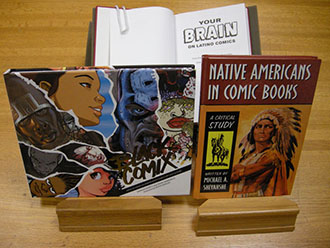Collection chronicles ethnic representation in comics

The comics collection aims to document the highs and lows regarding the history of diversity within comic strips, comic books and graphic novels. (Photo from the Amistad Research Center)
After talking to his son about diversity among comic book characters, Harter began to pay more attention to the historic portrayal of ethnic groups in the publications.
“I told him about Black Lightning, Luke Cage, Bumblebee and Storm, but our discussion of this made me think more about representations of racial and ethnic communities,” Harter recalls. “Independent comics and graphic novels were booming at the time, and a greater sense of diversity was being seen in comics.”
Simultaneously, Amistad was seeking new areas of collecting. Harter was aware that comics and graphic novels were being used as teaching tools and more libraries were beginning to collect them, but none focused on the issue of diversity within comics. The idea for a Comics and Graphic Novels Collection that documents the progression of diversity in that industry was perfect.
Since the formation of the collection, Harter says it is used regularly by researchers of all ages including Tulane students and faculty.
The oldest title is a 1946 edition of George Herriman's Krazy Kat comic strip, but the collection ranges from superhero comics to graphic novels about the Civil Rights Movement and immigrant communities. Harter hopes to build the collection to showcase it in a future exhibition at the center.
